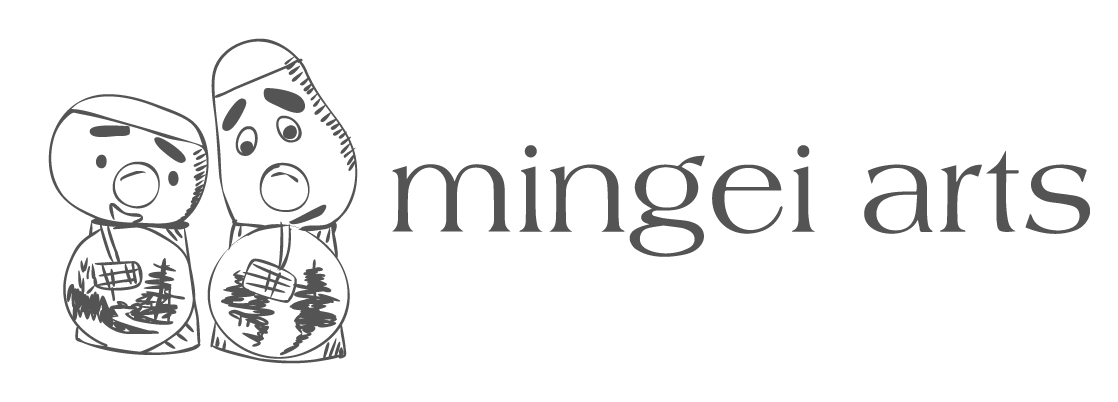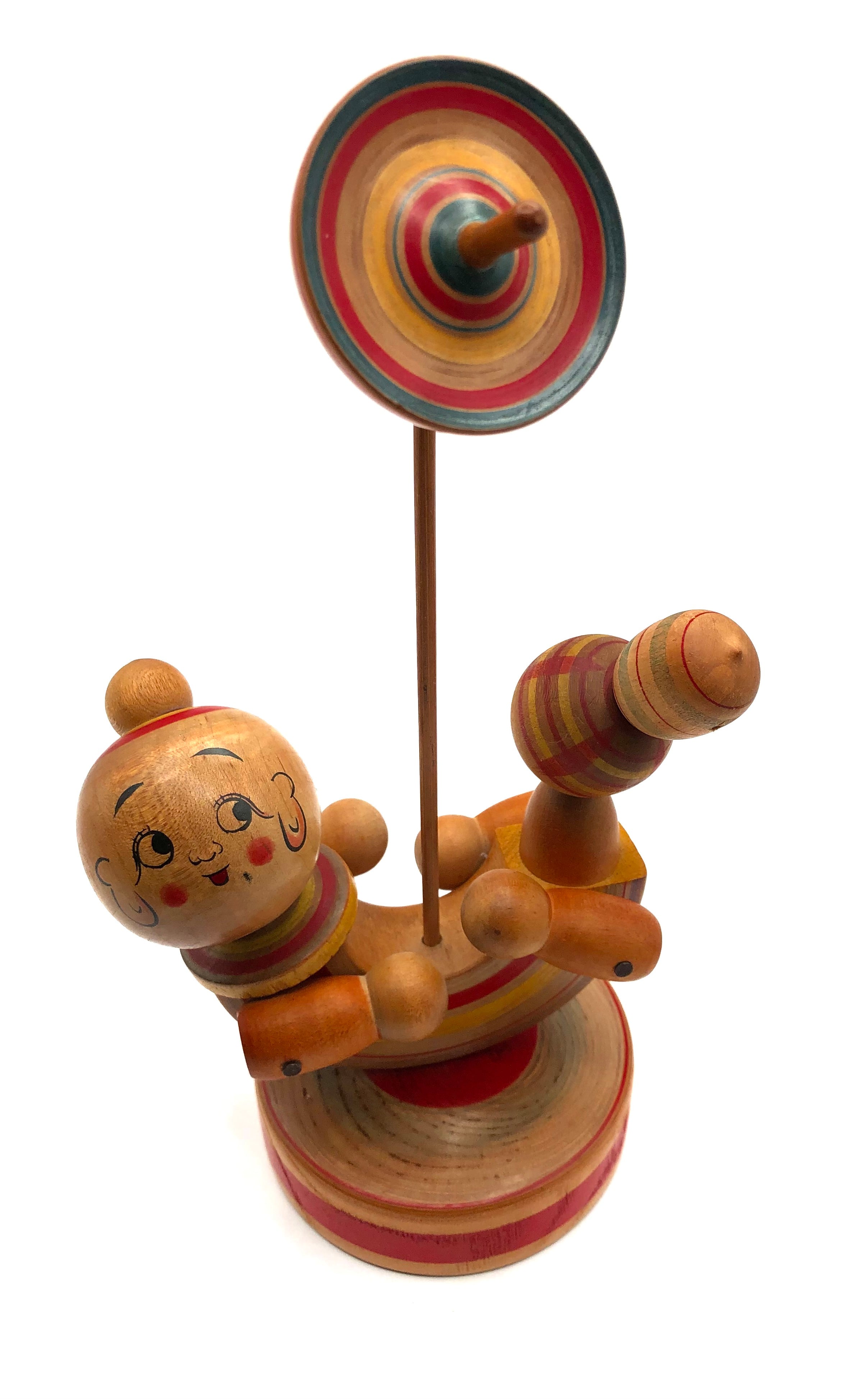
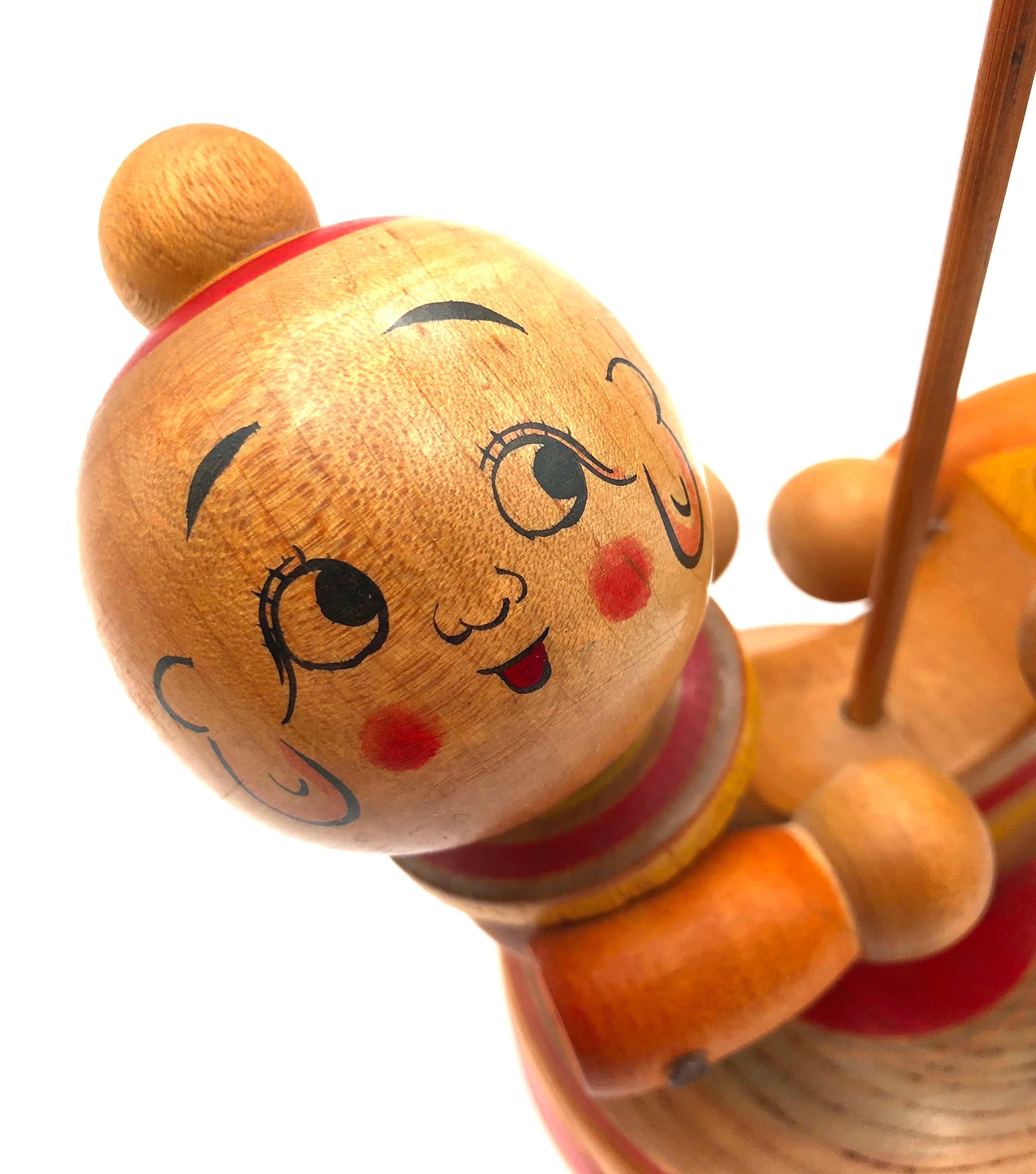
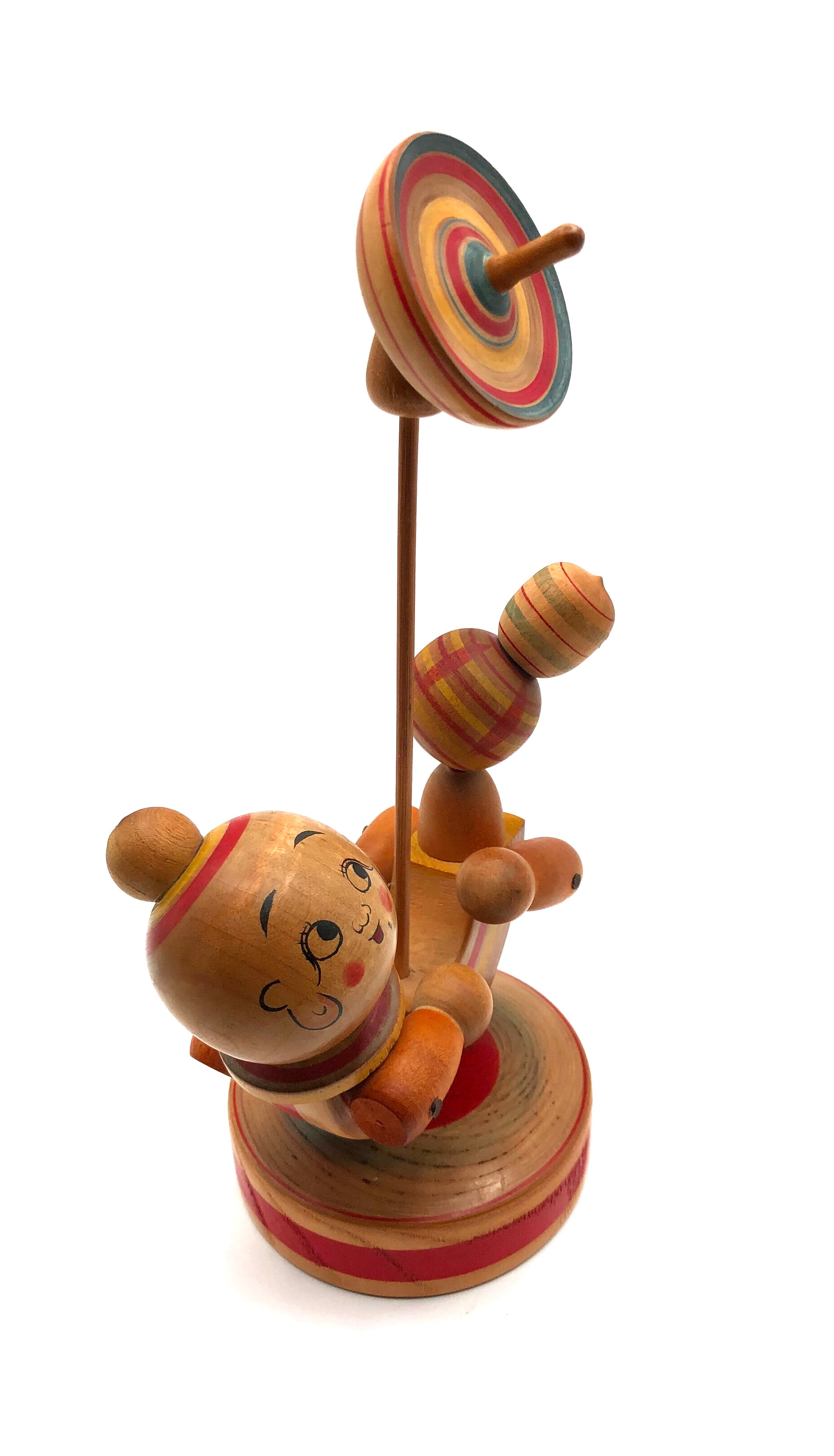
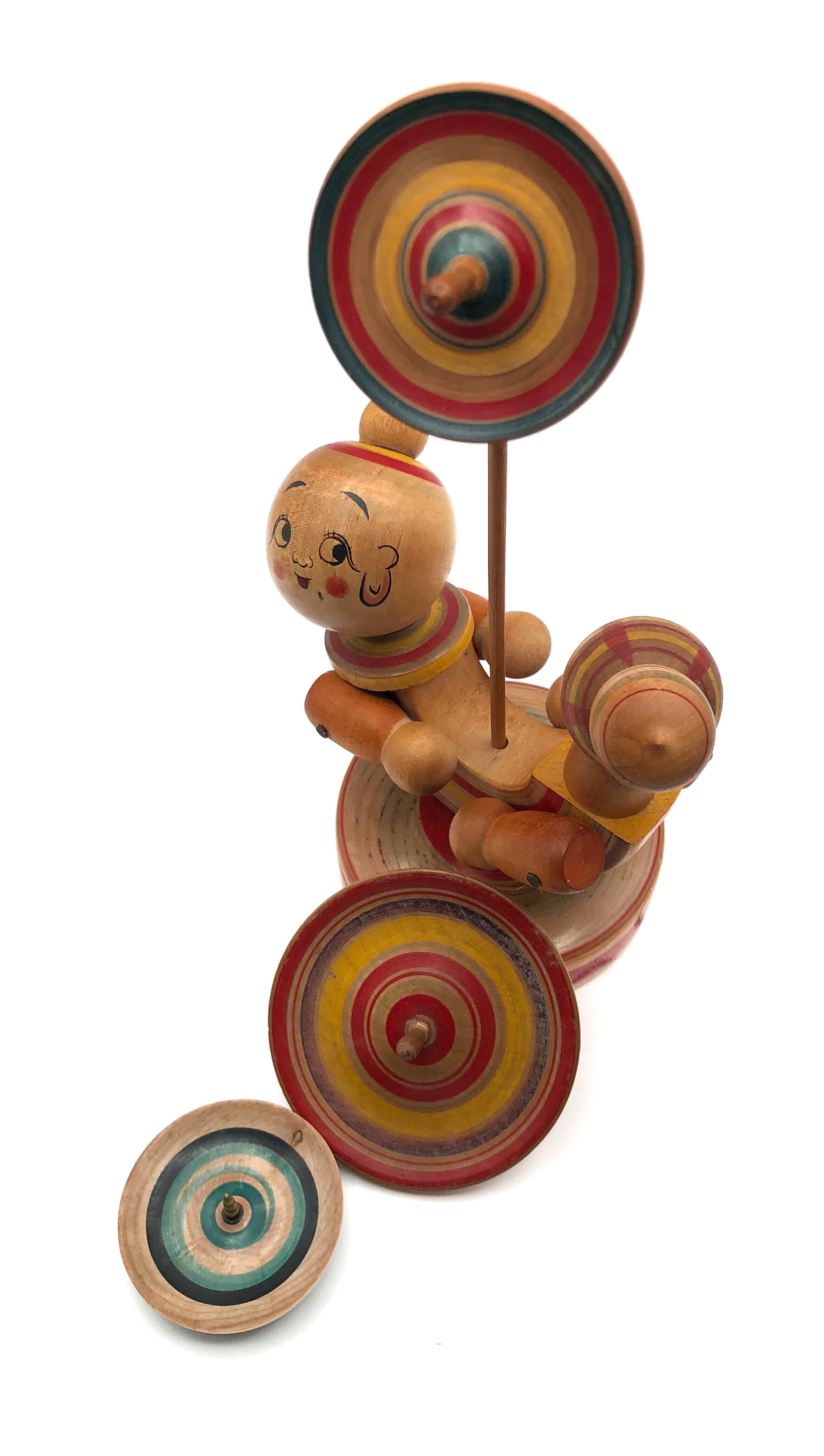
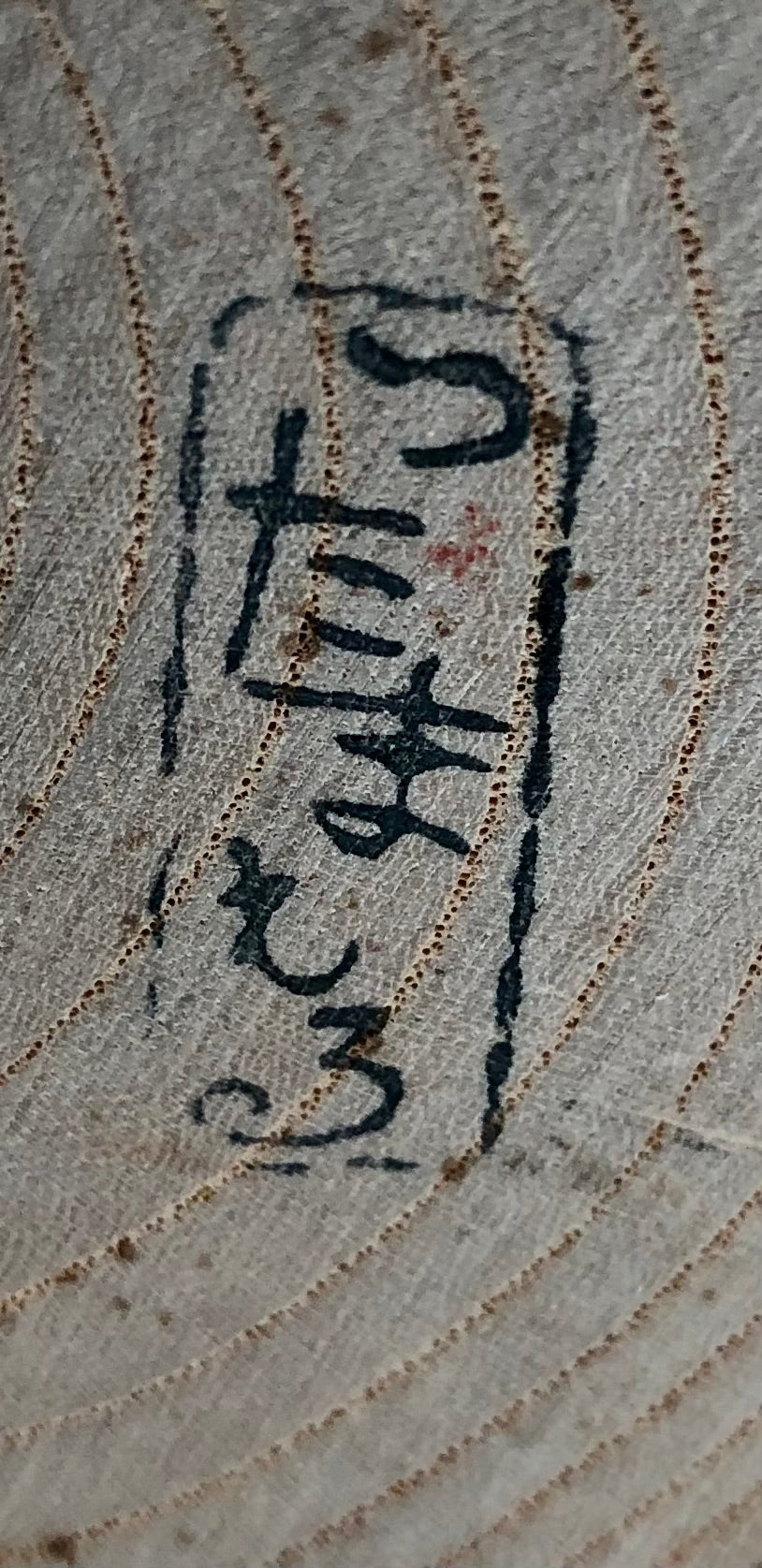
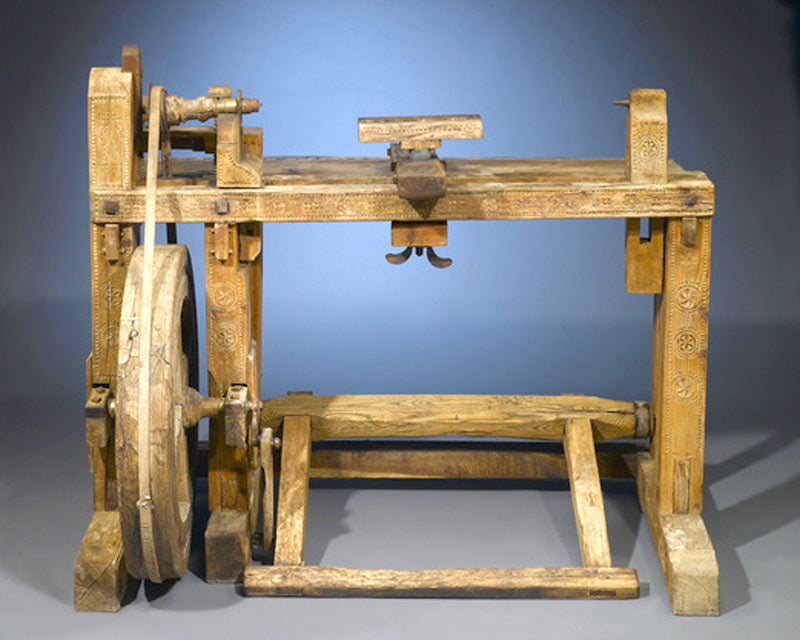
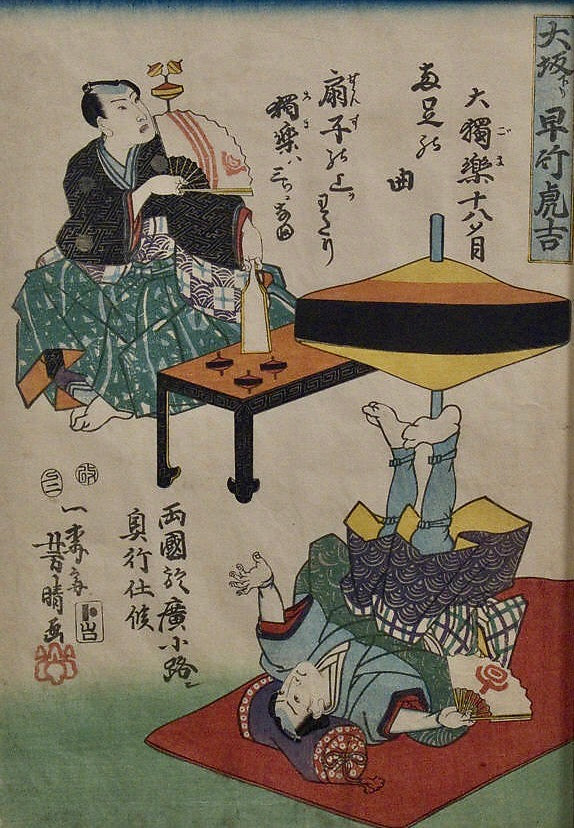
Vintage Japanese Clown Kokeshi Toy with Spinning Top by Tsuta, Mamoru (1928-2009)
Dimensions: 11-1/2”h x 5-3/4” x 4-0”d
Offered is an unusual, old, and rare Kijigangu by the elder Brother within the Tsuta Family of toy makers depicting the main character of the four-frame manga “Shochan’s Adventure” which was an act that continued throughout the Taisho era having been established in 1923. Mamoru’s father created the first Kokeshi toy of this type which was carried on throughout the family's making business. Japanese toy makers changed the stagnant fixed toy with their amazing interactive and mechanical toys representing three-dimensional images of all aspects of everyday life.
Seen is a toy that depicts an equilibrist, a funny and entertaining clown during this period which was one of several such lathe-turned wooden toys and tops that the family produced and inspired by Kokeshi craftsmen throughout Northern Japan. The most fascinating aspect is the head and face of the clown which is fixed and does not move, very expressionistic with wide, engaging eyes, large ears, a happy smile, and red cheeks. He is lying on his back both juggling balls and three spinning tops on a long pointed poll. The challenge of this toy is to be able to balance all three tops of which the largest is the most difficult challenge for it takes extreme balance skills to spin it before it falls off the poll. Additionally, his arms and feet move freely and are attached with dowels. It is a colorful toy utilizing red and green to give it life. The piece was signed by the artist and was done so because these pieces were sold as a souvenirs to bring home to their children. During this time frame, craftsmen began to sign both Kokeshi dolls and Toys because many of them began to be exported. Fumio, son of Mamoru continues to produce and sell smaller versions using wood as well as other materials inspired by the older Tsuta family craftsmen.
NOTE: The pigments used in this doll's creation are not colorfast, so colors may fade if brought into contact with water. The entire figure should be handled carefully at all times as it has been by the previous owner who treasured the works of the Tsuta family.
You can read more about this family in our BLOG by going to: https://mingeiarts.com/collections/artisan-interactive-toymaker-tsuta-family-sakuzuo-mamoru-fumio-1892-1944
Condition: Excellent meaning the piece is perfect, totally original, and complete and functions as intended. No cracks, no breaks, no missing pieces, and it retains its wonderful presence which suggests a degree of color variation that corresponds to its vintage. The artifact meets all the standards of the collectible Vintage Kokeshi toys and without question a unique treasure for the Japanophile.
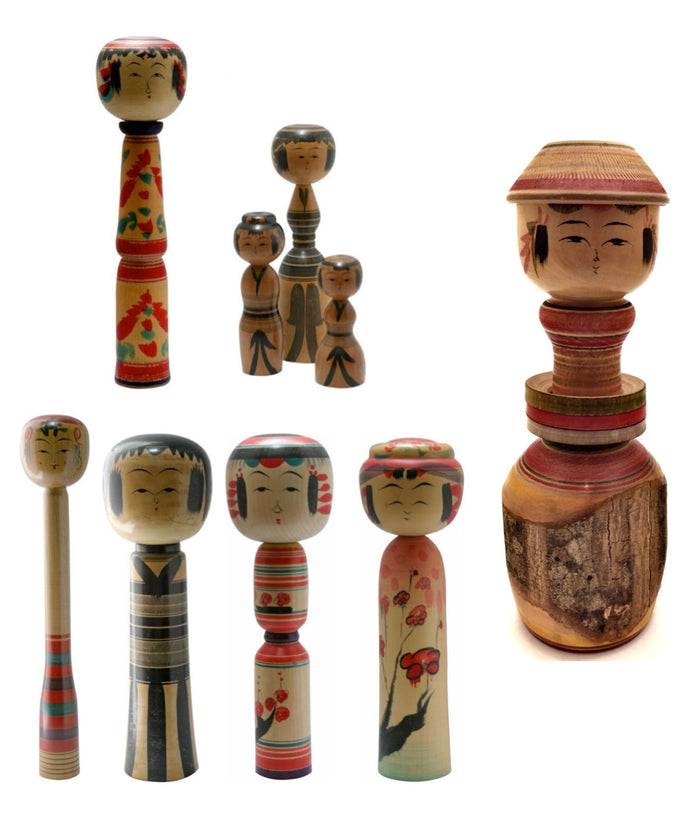
Japanese Traditional Kokeshi
Yajirou-Kei (Family)
Prefecture: Miyagi
Origin:
This strain of Kokeshi is said to have been an offshoot of the Tougatta strain and is far less refined. That eventually developed into a unique style that remains today. The creators of these dolls hail from the small farming village of Yajirou-machi near Kamasaki Onsen, in Miyagi Prefecture, once a farming village between two tall mountains. The Kiji-shi (woodworkers) divided their time between farming and woodcraft. Those who made kokeshi in their spare time sent their wives to the nearby Kamasaki Onsen to sell their work to tourist shops and onsens.
Collector's note – characteristics/painting style:
The majority of this style has distinct waists, or (kubire), where the body tapers inward, with a wider, flared base similar to a kimono, thus making them very stable. The upper body usually has a hand-painted collar with horizontal stripes encircling the body, as in the Rokoru-moyo style, and vertical stripes running below the waist to the base of the doll. However, Yajirou dolls can also be found with a series of chrysanthemum petals running down the front of the body, or a branch of plum blossoms, as the only decoration. Yajirou dolls are some of the most brightly painted of the traditional family group. Utilizing a veritable rainbow of colours, from the usual red and black to green, yellow, and even blue and purple, they are available in probably the widest range of shapes. Some also have a painted beret-like feature or a bun on their heads, similarly painted with a red center spot. Less common are Yajirou who have conical hats known as Suge-Gasa. Typically seen is one lid or double eyelids and a cat or pick-shaped nose. Yajirou kokeshi have been made from cherry wood, camellia, and maple, but the preferred wood is white dogwood, (Mizuki). And finally, both Yajirou and Tougutta dolls are sometimes created with loose rings circling the waists. Carved from the same wood as the body, which is a very meticulous method! This treatment is referred to as 'Yamiyo' style kokeshi.

Leading, Craftsmen:
Niiyama, Keimi, 1925, (Shirabu, Yamagata) - Master Niiyama, Keimi. No additional published information
Niiyama, Fukutaro, 1898-1965 - No additional published information
Niiyama Fukuo, 1922, (Yajiro Shironishi, Miyagi) - Master: Niiyama, Fukutaro. No additional published information
Niiyama, Hisaharu, 1942-2008 - No additional published information
Niiyama, Sanai (Master) - No additional published information
Oizumi, Kiyoni - No additional published information
Saito Masao, 1932, (Shiroishi, Miyagi) - Master: Sato, Tsugio. No additional published information
Sato Tatsuo, 1928-2009, (Yajiro Shiroishi , Miyagi) - Master: Sato, Imasaburo. No additional published information
Sato Yoshiaki, 1936, (Shiroishi Miyagi) - Master: Sato, Tatsuo. No additional published information
Sato, Koichi, 1936, (Shiroishi, Miyagi) - Master:Hamatsu, Heisaburo. No additional published information
Explore & Learn More about Yajirou-Kei (Family)